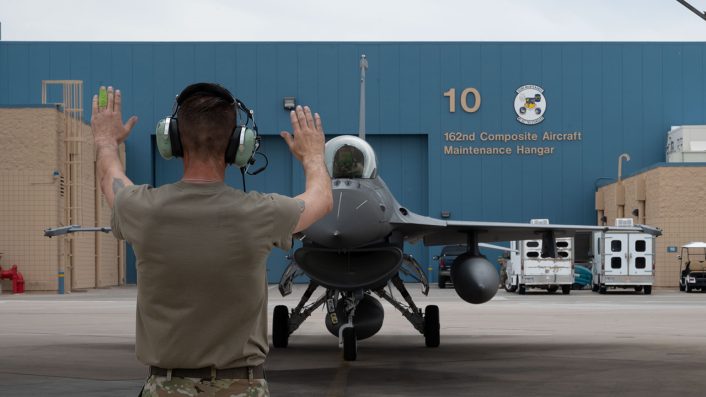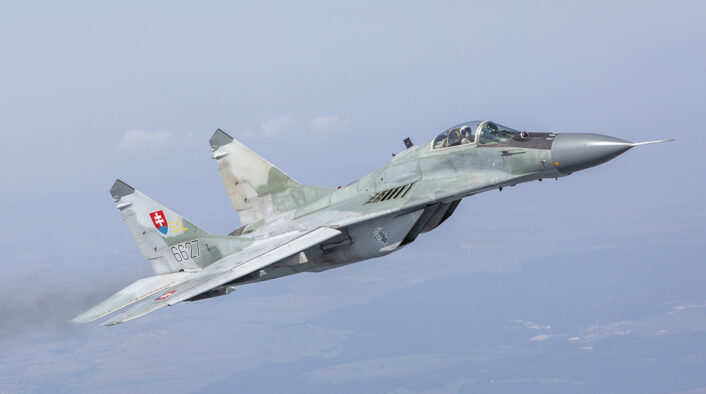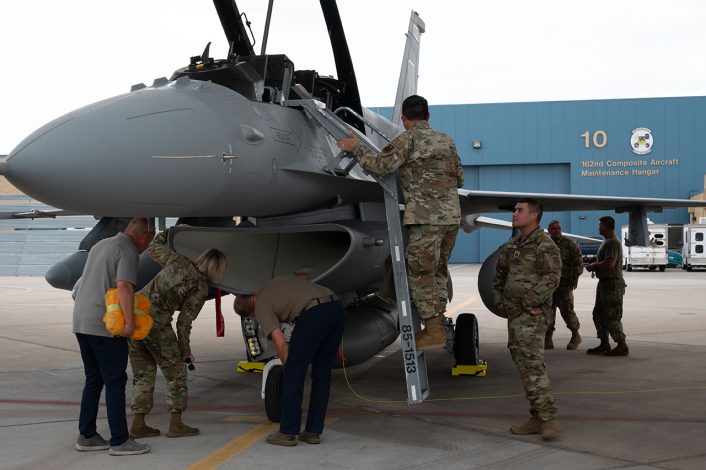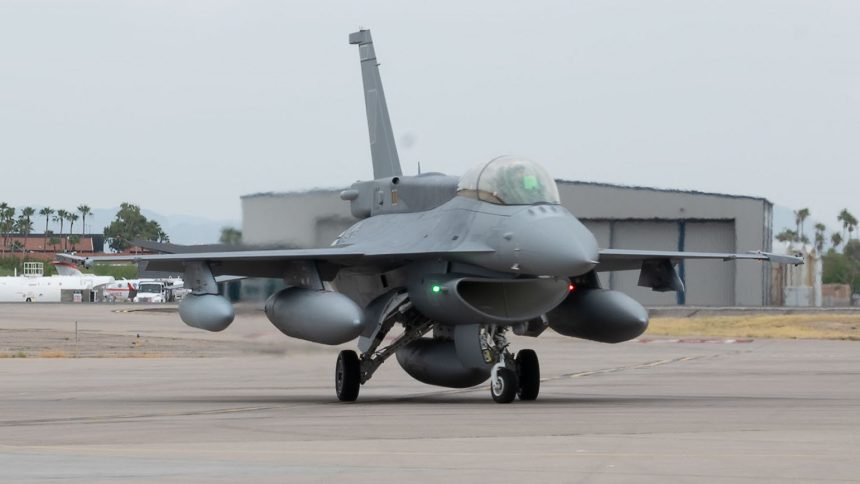The Arizona Air National Guard has received its first of nine Slovak F-16 Block 70s and will host Slovak Air Force training on the type.
On June 13, 2024, Morris Air National Guard Base, Arizona, situated at Tucson International Airport, welcomed its first Slovak Air Force F-16 Block 70 “Viper”. The base’s host unit, the 162nd Wing, has been training the initial Slovak cadre on F-16 operations for two years.
“The cadre of Slovakian F-16 pilots underwent an initial basic course covering air-to-air and air-to-ground tactics,” said Lt. Col. Matthew Hodges, squadron commander when Slovakian cadre of pilots started in a public release. “After they completed the basic course, they then seasoned and built the hours required for the Flight Lead upgrade and some continuing to season for the instructor pilot upgrade to be able to go back to Slovakia and start their own F-16 operations.”
Morris ANGB is set to receive up to nine Slovak-owned F-16 Block 70s.

The 162nd Wing has trained eleven pilots so far. The pilots, while in the United States, undergo several phases of training, including a basic air-to-air and air-to-ground tactics course and flight lead upgrade training.
The Slovak Air Force flew the MiG-29 Fulcrum until August 2022 but had previously signed a letter of intent to co-operate the Saab JAS-39 Gripen with Sweden in 2014. In 2018, however, Slovakia instead decided to purchase 14 Lockheed Martin F-16 Block 70/72 “Vipers”, the latest model of the now-50-year-old fighter, in a deal worth 1.58 billion Euro (1.8 billion USD). As previously reported by The Aviationist, Slovakia gifted thirteen of their MiG-29s to Ukraine in 2023 after the type’s retirement the year prior.

The first Vipers were supposed to arrive in the country in 2022/23 but the delivery slipped, therefore, to address the lack of fighter jets, the government of the Czech Republic approved the Slovak request for help to protect Slovak airspace.
Deliveries of Slovakia’s new fighters are expected to continue through 2025. Two of the Slovak F-16s will be delivered to Slovakia to begin home station operations later this year. The delivery will mark the first brand new F-16s with Block 70 capabilities to operate in Europe (the Greek Vipers are upgraded from the Block 52+).
The Arizona Air National Guard-hosted F-16s are expected to call Arizona home until 2026.
As for Morris ANGB, the base has been training allied nations in F-16 operations since 1992. It previously and concurrently trained pilots and maintenance personnel from a large number of countries, including Singapore, Iraq, the United Arab Emirates, Israel, Poland, Italy, and Taiwan. The 162nd Wing also travels to some allied countries to provide training at their home stations.
Notably, the Wing also hosts Ukrainian F-16 training.
The 162nd, in addition to their F-16 mission, also operates the MQ-9 Reaper under the 214th Attack Group.
The F-16 Block 70/72
Lockheed Martin’s new F-16 Block 70/72 is an upgrade over older models, providing a newer APG-83 Scalable Agile Beam Radar (SABR) system, an updated glass cockpit, and a greater airframe lifespan. The Northrop Grumman-produced APG-83 radar is able to provide a larger targeting range, track 20-plus air and ground targets at once, and has parts commonality with existing F-22 and F-35-mounted radar systems, according to a Lockheed Martin press release on the F-16V. The Slovak aircraft are built at the Lockheed Martin facility in Greenville, South Carolina.
“The F-16 Block 70 is the latest edition of one of the most combat proven fighter jets of all time,” said Col. Thomas Obrochta, 162nd Operations Group commander. “It includes an advanced APG-83 Active Electronically Scanned Array [AESA] fire control radar, a high-resolution Center Pedestal Display, which provides critical tactical imagery to pilots and allows them to take full advantage of AESA and targeting pod data, advanced weapons integration, and an extended structural life of 12,000 hours– more than 50 percent beyond that of previous production F-16 aircraft.”










